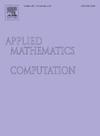介绍大多数添加剂着色
IF 3.4
2区 数学
Q1 MATHEMATICS, APPLIED
引用次数: 0
摘要
多数加性着色是一种着色类型,其中每个顶点被分配一个数字,然后计算其相邻数字的总和,称为邻居和。为了使着色有效,在每个顶点的邻域内,它的邻居最多有一半共享相同的邻居和。因此,多数加性着色是两个已知问题的结合:加性着色和多数着色。用χmac(G)表示的多数加性着色数是实现G的多数加性着色所需的最小颜色数。我们针对不同类型的图给出了关于χmac的几个结果。对于完全图和循环,我们已经确定了参数的确切值,而对于树,我们已经找到了紧上界。本文的主要结果表明,对于周长大于5、极大度足够大、极小度接近极大度的图,只用数字1和2就足够了。本文章由计算机程序翻译,如有差异,请以英文原文为准。
Introduction to majority additive coloring
Majority additive coloring is a type of coloring where each vertex is assigned a number, and the sum of its neighbors' numbers, called the neighbor sum, is then computed. For the coloring to be valid, in the neighborhood of each vertex, at most half of its neighbors can share the same neighbor sum. Therefore, majority additive coloring is a combination of two known problems: additive coloring and majority coloring. The majority additive chromatic number, denoted by , is the smallest number of colors required to achieve a majority additive coloring of G. We present several results regarding for different types of graphs. For complete graphs and cycles, we have determined the exact value of the parameter, while for trees, we have found a tight upper bound. The main result of this work shows that for graphs with girth greater than 5, a sufficiently large maximum degree, and a minimum degree close to the maximum degree, it is sufficient to use only the numbers 1 and 2.
求助全文
通过发布文献求助,成功后即可免费获取论文全文。
去求助
来源期刊
CiteScore
7.90
自引率
10.00%
发文量
755
审稿时长
36 days
期刊介绍:
Applied Mathematics and Computation addresses work at the interface between applied mathematics, numerical computation, and applications of systems – oriented ideas to the physical, biological, social, and behavioral sciences, and emphasizes papers of a computational nature focusing on new algorithms, their analysis and numerical results.
In addition to presenting research papers, Applied Mathematics and Computation publishes review articles and single–topics issues.

 求助内容:
求助内容: 应助结果提醒方式:
应助结果提醒方式:


